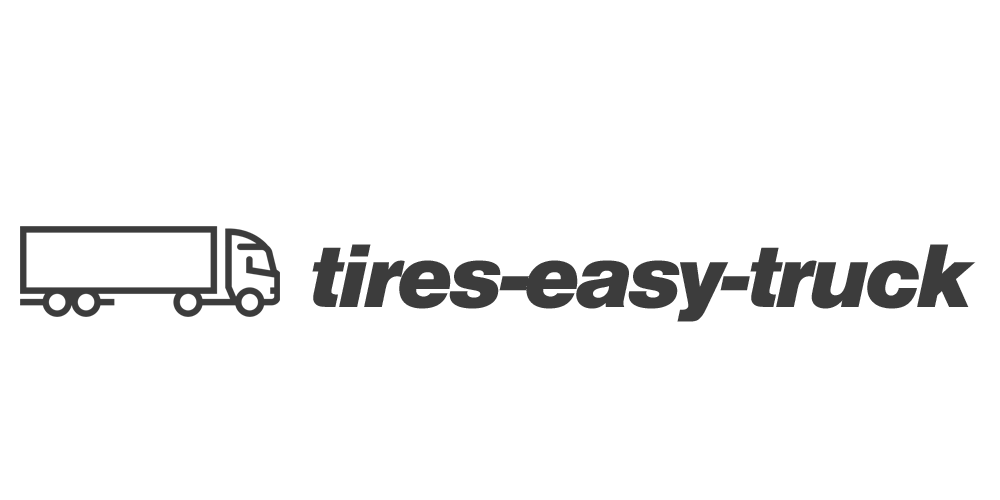Last Updated on April 22, 2024
Introduction to Interest Rate Trends and Their Impact
The global economy has dramatically changed in the past few years, particularly marked by fluctuating interest rates. These changes have not just impacted financial markets, but they have also had a significant effect on various industries, including the automotive sector. Both businesses and consumers need to understand these trends, especially those interested in the truck tire market.
Overview of Interest Rate Trends
Interest rates, set by central banks like the Federal Reserve in the United States, are a primary tool for controlling economic growth. Reducing interest rates can encourage people to spend more and borrow money during economic decline.
On the other hand, when the economy is growing too quickly and inflation becomes a concern, higher interest rates are implemented to slow down economic activity.
Over the past few years, the global economy has experienced ups and downs, influenced by geopolitical tensions, trade disputes, and the unprecedented impact of the COVID-19 pandemic. In response to these events, central banks worldwide have adjusted interest rates, impacting lending rates for consumers and businesses.
For instance, many central banks slashed interest rates to historic lows during the pandemic to support economic activity. However, as economies began to recover and inflation started to rise, there has been a gradual shift towards increasing interest rates to stabilize the economy.
Impact on the Automotive Industry
The automotive industry, which includes the truck segment, is susceptible to changes in interest rates for several reasons:
- Cost of Borrowing: Higher interest rates increase the cost of borrowing for manufacturers and consumers. For manufacturers, this can mean higher costs for financing operations and investments. This means more expensive auto loans for consumers, which can deter vehicle purchases.
- Consumer Spending: As borrowing costs rise, consumers may become more cautious. This can lead to a decrease in discretionary purchases, including vehicles. This might mean delayed purchases or more affordable tire choices for the truck market.
- Inventory and Supply Chain: Changing interest rates can affect automotive companies’ inventory management and supply chain decisions. Higher rates lead to reduced inventory levels to minimize costs, which can impact the availability of vehicles and parts, including tires.
- Economic Confidence: Interest rates are a leading indicator of financial confidence. When rates rise, it often signals a growing economy, but it can also lead to uncertainty among consumers and businesses, impacting their purchasing decisions.
The cost of truck tires is a significant expenditure for truck owners and operators, and changes in the economic environment directly influence their buying behavior. This overview sets the stage for exploring how rising interest rates have specifically affected tire shoppers. Operational costs and vehicle maintenance heavily influence financial planning and decision-making in this context.
Understanding Interest Rates and the Tire Market
Interest rates significantly impact the economy, affecting how people spend money and businesses operate in the tire industry. This section will discuss the basic economics of interest rates and their connection to buying truck tires.
Basic Economics of Interest Rates
Fundamentally, interest rates represent the costs of borrowing money. Central banks, like the Federal Reserve in the United States, have the power to govern these rates, which can impact the economy’s overall direction. Central banks use various tools to influence economic growth, regulate inflation, and maintain currency stability.
When interest rates are low, borrowing is cheaper, encouraging consumers and businesses to take loans. This leads to increased spending and investment, stimulating economic growth.
However, when interest rates are high, the cost of borrowing increases. This leads to a decrease in spending and investment, which helps to curb an economy that is experiencing excessive growth.
Correlation between Interest Rates and Tire Purchasing
The relationship between interest rates and tire purchasing complex, especially in the truck tire industry. There are several aspects to consider regarding this relationship:
- Consumer Borrowing Costs: Higher interest rates mean higher costs for auto loans. This could mean that consumers might postpone or reduce their vehicle purchases, indirectly affecting tire sales. If fewer new trucks are purchased, the demand for new tires may decrease accordingly.
- Business Investment: Many truck operators, fleets, and logistics companies rely on credit for their operations and capital expenditures, which include tire purchases. When interest rates rise, the cost of financing these investments increases. This could result in postponing maintenance or opting for cheaper tire options.
- Economic Confidence and Spending: Interest rates serve as an indicator of the overall health of the economy. Higher rates signal a strong economy, but they can also increase the cost of living and operating, causing consumers and businesses to be more cautious with their spending. In the truck tire market, this could result in extended tire usage, increased interest in retreads, or opting for budget-friendly options.
- Inventory Management: For tire manufacturers and retailers, interest rates can influence inventory strategies. Higher interest rates can increase the cost of carrying extensive inventories, leading to more conservative stocking practices. This might affect the availability and price of certain types of truck tires.
- Global Trade Impacts: Interest rates also impact currency values, which affect import and export dynamics. In the tire industry, which operates worldwide, fluctuations in currency values caused by changes in interest rates can impact cost structures and ultimately affect the prices of imported and exported tires.
Interest rate changes can significantly affect the tire industry’s consumer behavior and business strategies, influencing everything from purchasing decisions to inventory management. When consumers and businesses know these patterns, they can better adapt to market changes and make more informed decisions.
Behavioral Changes in Tire Shoppers
Consumer behavior has changed a lot as the economy has changed. Businesses and consumers alike need to understand these changes in behavior to adjust to changing economic conditions.
The Shift in Consumer Spending Patterns
Inflation, interest rates, and economic confidence heavily influence consumer spending. These factors have changed tire shopping spending patterns in the following ways:
- Extended Use of Current Tires: During periods of economic uncertainty or when people have less money to spend, consumers often choose to keep using their current tires for longer than they usually would before replacing them. Many people choose to do this to delay the expense of buying new tires.
- Preference for Lower-Priced Tires: A noticeable trend is emerging where people increasingly opt to buy more affordable tires. Consumers are more likely to compare prices and opt for brands that offer the best value for money rather than choosing premium or higher-end products.
- Increased Research and Price Sensitivity: Consumers are becoming more diligent in researching before purchasing. This includes comparing prices, reading reviews, and seeking recommendations. There’s a heightened awareness of getting the best deal possible.
- Rise in Online Shopping: The convenience and the ability to easily compare prices online have led to increased purchases of tires through e-commerce platforms. Businesses like Tire Easy Truck benefit from this trend as consumers seek user-friendly, informative online shopping experiences.
Increased Demand for Cost-Effective Solutions
Consumers are increasingly seeking cost-effective solutions when purchasing tires due to the economic pressures they face. This trend is characterized by:
- Retreaded Tires: There’s an increased interest in retreaded tires, which offer a more affordable alternative to new tires. Retreading involves replacing the worn tread on used tire casings with new treads. This offers a budget-friendly and eco-friendly alternative.
- Maintenance and Tire Care: There’s a growing emphasis on tire maintenance to extend their lifespan. Consumers are increasingly adopting practices like regular tire rotation, ensuring proper inflation, and conducting alignment checks to maximize their tire investments.
- Bundle Deals and Promotions: Consumers are more attracted to bundle deals, discounts, and promotions. The offers in the commercial truck sector are attractive, given that buying multiple tires can be pretty costly.
- Long-Term Value vs. Immediate Cost: There’s a noticeable shift towards considering the long-term value of tires, including factors like durability, fuel efficiency, and total cost of ownership, rather than just the immediate purchase price.
It is essential to understand customer’s needs and preferences. Tire Easy Truck adapts well to the changing needs of tire shoppers by providing a range of affordable options, a robust online presence, and helpful advice on tire care and maintenance.
The Truck Sector: A Closer Look
The truck sector faces unique challenges and opportunities regarding tire management and purchasing. Understanding the specific impacts on truck owners and operators and the prevailing trends in the truck tire market is essential for businesses to cater effectively to this segment.
Specific Impact on Truck Owners and Operators
Truck owners and operators are significantly influenced by various economic and industry-specific factors that affect their tire purchasing decisions, such as:
- Operational Costs: Truck operators are primarily concerned about the overall operating cost, which includes essential components such as fuel and tires. The bottom line of businesses is directly affected by fluctuations in tire prices.
- Downtime and Efficiency: Truck operators prioritize minimizing downtime. Tires that offer longer life and require less frequent replacement or maintenance contribute to higher efficiency and lower operational costs.
- Safety and Compliance: Regulatory requirements for tire tread depth and overall condition are necessary in the trucking industry. Truck operators must balance cost considerations with meeting these safety standards.
- Fuel Economy: Tires play a crucial role in fuel efficiency. Truck operators often seek tires that reduce rolling resistance, improve fuel economy, and reduce overall expenses.
Trends in the Truck Tire Market
The truck tire market is influenced by several trends, shaped by technological advancements, economic factors, and evolving consumer preferences:
- Increased Demand for Fuel-Efficient Tires: A growing demand for tires offer better fuel efficiency through lower rolling resistance. This trend aligns with the overall industry focus on sustainability and cost-effectiveness.
- Rise of Retreaded Tires: The market for retreaded truck tires is expanding, driven by their cost-effectiveness and environmental benefits. This trend is widespread in the commercial trucking sector.
- Technological Innovations: Advancements in tire technology, such as improved tread designs, advanced rubber compounds, and reinforced sidewalls, are shaping purchasing trends. These innovations enhance tire life, durability, and performance, which are essential for truck operators.
- Focus on Total Cost of Ownership: Truck owners are increasingly looking at the total cost of ownership (TCO) of tires, considering factors like longevity, maintenance requirements, and fuel efficiency rather than just the upfront purchase price.
- E-Commerce and Online Purchasing: The shift towards online tire purchasing is also evident in the truck tire market. Truck operators use online platforms for research, price comparisons, and purchases, valuing convenience and transparency.
Strategies for Tire Shoppers Amidst Rising Interest Rates
Truck tire shoppers encounter specific difficulties when interest rates increase in the economy. The need for strategic planning and a value-focused approach becomes essential. It is necessary to thoroughly understand this particular market segment to make informed purchasing decisions.
Budgeting and Planning for Tire Purchases
Proper budgeting and planning are essential for tire shoppers to manage their expenses during rising interest rates. Here are some key aspects to consider:
- Advance Planning: Anticipating tire replacement needs beforehand allows for better financial planning. This involves keeping track of tire wear and performance to predict when replacements will be required.
- Allocating Funds: Setting aside funds specifically for tire purchases can help minimize the impact of sudden expenses. This is particularly important for truck operators, where tire costs can be a significant part of operational expenses.
- Exploring Financing Options: Exploring various financing options with higher interest rates becomes important. Some tire retailers offer financing plans that might be more beneficial than traditional credit options.
- Seasonal Purchases: Timing purchases to align with seasonal sales or promotions can save costs. Tire prices can fluctuate based on seasonality, and taking advantage of off-peak prices can be beneficial.
Seeking Value: Quality vs. Price
In a high-interest-rate environment, the balance between quality and price is more critical than ever. Tire shoppers should consider the following:
- Long-term Value: It is essential to consider the long-term value of tires instead of solely focusing on the initial cost. This includes considering aspects like durability, warranty, fuel efficiency, and the cost per mile.
- Quality Considerations: Investing in high-quality tires can be more cost-effective in the long run. Premium tires offer better longevity, safety, and performance, which can reduce the overall cost over time.
- Comparative Shopping: Using online platforms to compare prices and specifications is smart. Businesses like Tire Easy Truck make comparing various tire brands and models convenient, enabling shoppers to make well-informed choices.
- Reviews and Recommendations: Reading reviews and seeking recommendations can guide shoppers toward tires that offer the best balance of quality and price. User experiences can provide valuable insights into the real-world performance of different tire types.
Optimizing Tire Shopping for Truck Owners
When it comes to tire retailing, Tire Easy Truck has positioned itself as a key player in optimizing tire shopping for truck owners. This section focuses on how the business adapts to market changes and offers tailored services for cost-conscious truck owners.
Adapting to Market Changes
The tire market continually evolves, influenced by economic shifts, technological advancements, and consumer preferences. Here are some market changes:
- Keeping Pace with Industry Trends: Staying informed about the latest developments in the tire industry, from new tire technologies to shifting market demands, allows Tire Easy Truck to align its offerings with what truck owners need and want.
- Responsive Product Offerings: As the market evolves, so do the needs of truck owners. Tire Easy Truck adapts by offering a diverse range of products that cater to different requirements, whether for improved fuel efficiency, better durability, or advanced performance.
- Educating Customers: A key focus is to provide customers with up-to-date information about products and market trends and how they impact tire choices. This includes sharing insights on how economic factors like interest rates affect tire pricing and availability.
- Digital Adaptation: Tire Easy Truck ensures its online presence is robust, user-friendly, and equipped with tools that make tire shopping efficient and informative.
Offers and Services for the Cost-Conscious Truck Owner
Cost is a significant consideration for truck owners when purchasing tires. Tire Easy Truck addresses this concern through various offers and services:
- Competitive Pricing: By offering tires at competitive prices, Tire Easy Truck ensures that customers get value for their money, which is required in a market with high price sensitivity.
- Special Promotions and Deals: Regular promotions, discounts, and bundle offers are staples. These deals are designed to provide cost advantages to truck owners, especially those needing to replace multiple tires simultaneously.
- Cost-Effective Tire Options: Understanding that not all truck owners will opt for premium tires, a range of cost-effective alternatives is provided. These options balance quality and price, catering to a broader audience.
- Financial Tools and Resources: To assist in budgeting and financial planning for tire purchases, Tire Easy Truck offers resources like financing options, budgeting guides, and cost calculators.
- After-Sale Services: To ensure customers get the most out of their purchases, services like tire fitting, balancing, and alignment are offered. This enhances tire life and performance and adds value to the customer’s purchase.
Tire Easy Truck is committed to optimizing the tire shopping experience for truck owners, adapting to market changes, and providing offers and services that cater to the budget-conscious. By doing so, it establishes itself as a trusted and valuable resource in the truck tire market, ensuring that customers return for their tire needs.
Future Outlook
The ups and downs of global economic trends and market dynamics influence the tire industry. Staying ahead in this evolving landscape requires understanding current market conditions and a forward-looking perspective. This section explains the future outlook for the tire industry, particularly in the context of interest rates and market fluctuations.
Predictions for Interest Rates and the Tire Industry
Interest rates are a significant factor in economic forecasting, and their future trajectory can significantly impact the tire industry:
- Interest Rate Trends: Economic experts often provide projections on interest rates based on global and domestic economic indicators. While precise predictions are challenging, trends suggest that interest rates may continue fluctuating in response to global economic conditions, such as inflation rates, labor market health, and geopolitical events.
- Impact on the Tire Industry: Changes in interest rates affect consumer spending power and business investment. For the tire industry, this translates into potential shifts in demand. Higher interest rates typically result in decreased consumer spending and could lead to a slowdown in tire sales. Conversely, lower rates might boost tire purchases.
- Influence on Raw Material Costs: Interest rates can also impact the cost of raw materials used in tire manufacturing. Changing rates can affect the prices of rubber, chemicals, and other components, subsequently influencing tire prices.
Preparing for Market Fluctuations
In an industry that is influenced by different economic factors, it is essential to be prepared and adaptable in the following ways:
- Flexible Business Strategies: Businesses in the tire industry must develop flexible strategies that quickly adapt to changing market conditions. This could involve diversifying product offerings, adjusting pricing strategies, or enhancing customer service.
- Forecasting and Analytics: Advanced forecasting tools can help predict market trends and prepare for potential changes. This includes analyzing consumer behavior patterns, economic indicators, and industry-specific trends.
- Building Resilience: Strengthening relationships with suppliers, exploring new supply chains, and maintaining healthy inventory levels can help mitigate the risks associated with market fluctuations.
- Customer-Centric Approach: Maintaining a focus on customer needs and preferences is crucial. This involves staying attuned to what truck owners and operators are looking for in their tire purchases and tailoring services and products to meet these evolving demands.
- Educational Resources: Providing customers with resources and information can help them make informed decisions, especially during economic uncertainty. This can include insights on how interest rates affect tire prices and tips on getting the best value for their money.
The future outlook for the tire industry requires a proactive and informed approach. Staying abreast of economic forecasts, preparing for market shifts, and continuously focusing on customer needs are essential strategies for navigating the future landscape of the tire market.
Conclusion & Recommendations
As we conclude this comprehensive guide, we will summarize the main points and offer some final thoughts and recommendations for people looking to buy truck tires.
Key Takeaways:
Throughout this guide, we’ve explored various aspects of the tire industry and its relationship with economic factors, particularly interest rates. Key points include:
- The Impact of Interest Rates: We’ve seen how changes in interest rates can significantly influence the tire market, affecting everything from consumer purchasing behavior to the cost of raw materials for tire production.
- Consumer Behavior Trends: There’s been a notable shift in consumer spending patterns, with an increased demand for cost-effective solutions. Truck owners, in particular, seek tires that offer the best balance of quality and price.
- Market Adaptability: We have explained how businesses can adapt to these changes, offering a range of products and services that cater to the evolving needs of truck owners and operators.
- Future Outlook: Like many others, the tire industry is subject to economic changes. Preparing for these changes is essential for both consumers and businesses.
Final Thoughts and Recommendations
Given these insights, it’s clear that staying informed and adaptable is critical to successfully navigating the tire market. For truck owners and operators, this means:
- Being Proactive: Regularly assess your tire needs and plan for replacements. This proactive approach can help avoid unexpected expenses and downtime.
- Seeking Value: Look for tires that provide the best return on investment. Consider long-term factors like durability, fuel efficiency, and overall performance, not just the initial purchase price.
- Utilizing Resources: Use educational resources and tools to stay informed about market trends and how they may affect tire prices and availability.
- Exploring Options: Don’t hesitate to compare different tire brands and models to find the one that best suits your needs.
Our commitment to our customers goes beyond just selling tires. We aim to partner in your journey, providing quality products and the guidance and support you need to make the best decisions for your truck and business.
Why tire easy truck?
As you consider your next tire purchase, know that “Tire Easy truck” is available to help. With our extensive selection of truck tires, we provide competitive prices and a convenient online platform, making the tire shopping experience easy, quick, and affordable for our customers. If you’re searching for durability, fuel efficiency, or budget-friendly options, our extensive catalog has precisely what you’re looking for.
We invite you to explore our offerings and take the first step toward optimizing your tire purchases. With “Tire Easy Truck,” you’re not just buying tires but investing in quality, reliability, and peace of mind.
FAQs
How do rising interest rates influence the overall cost of buying tires?
Rising interest rates can increase the cost of tires, especially for those relying on credit or financing options. Higher interest rates mean higher borrowing costs, which can add to the total expense of tire purchases.
Have rising interest rates led to changes in consumer preferences for tire types?
Growing interest rates often lead consumers to seek more cost-effective tire options. Shoppers might prioritize affordability over premium features, leading to an increased interest in budget-friendly or mid-range tires rather than high-end models.
Are tire shoppers more likely to delay purchases due to higher interest rates?
Higher interest rates can lead to more cautious spending, resulting in some consumers delaying tire purchases. This delay can be due to the need to manage overall expenses more tightly in a higher interest rate environment.
How do rising interest rates impact the demand for tire maintenance and services?
With rising interest rates, tire shoppers might place more emphasis on tire maintenance and services to extend the lifespan of their current tires, thereby postponing the need for new tire purchases.
What strategies can tire shoppers adopt to manage the impact of rising interest rates?
Tire shoppers can adopt several strategies to manage the impact of rising interest rates, such as planning and budgeting for tire purchases, seeking tires with the best value (quality vs. price), and taking advantage of promotions and discounts to reduce costs.
How does interest rate impact the total cost of the car?
The interest rate directly affects the total cost of financing a car. A higher interest rate increases the overall amount paid for the vehicle over the loan period. You end up paying more than the car’s sticker price due to the additional interest charges accrued over time.
How do interest rates affect the cost of goods?
Interest rates can influence the cost of goods indirectly. When rates are high, borrowing costs for businesses increase, which can lead them to raise prices to maintain profit margins. Additionally, consumer borrowing becomes more expensive, potentially reducing spending and affecting demand for certain goods.
How do interest rates affect your purchases?
Interest rates impact your purchases primarily if you use credit or loans. Higher rates mean higher borrowing costs, leading to more expensive loan repayments. This may cause you to reconsider or delay purchases, especially for big-ticket items like cars, homes, or expensive electronics.











